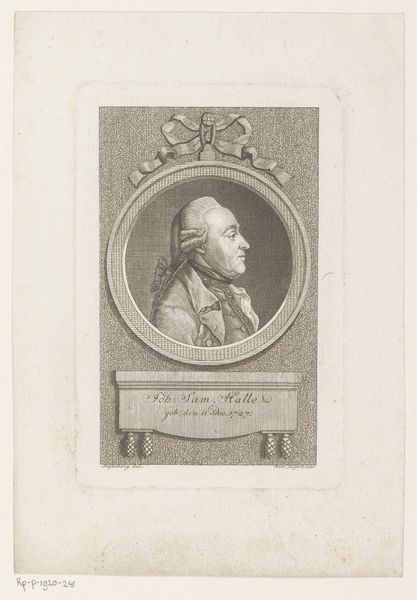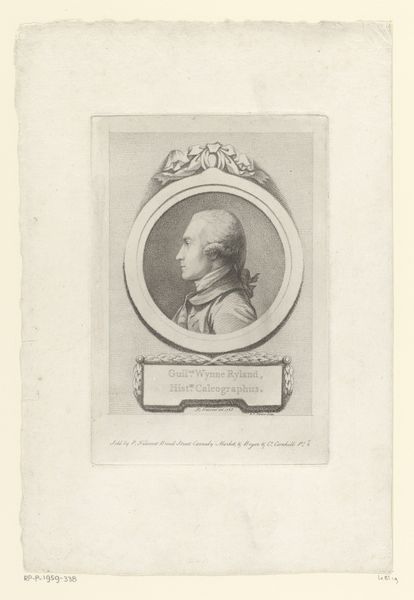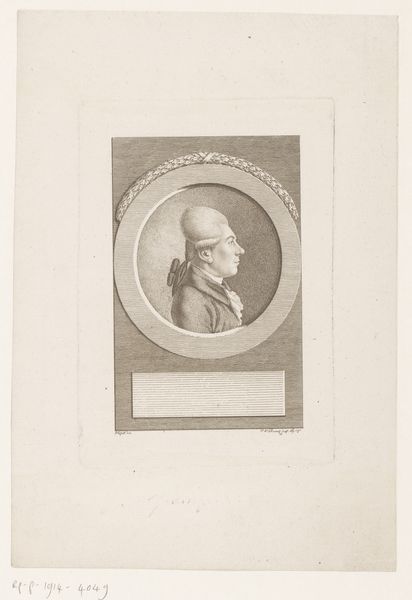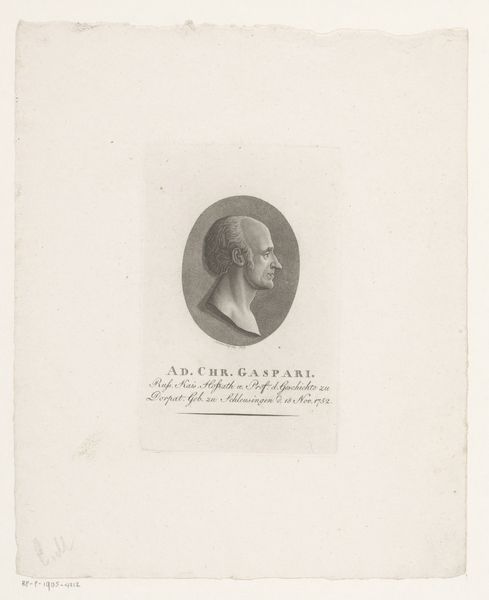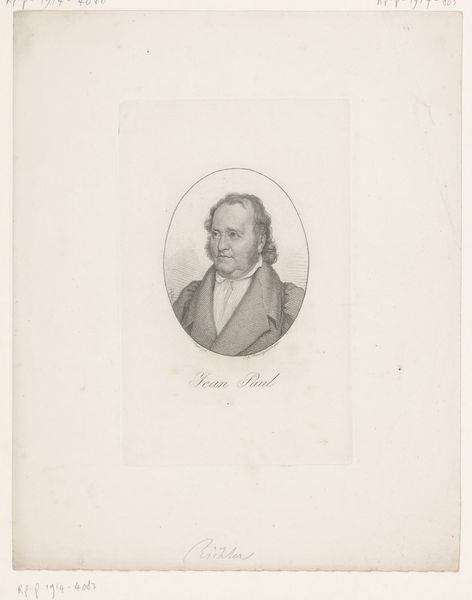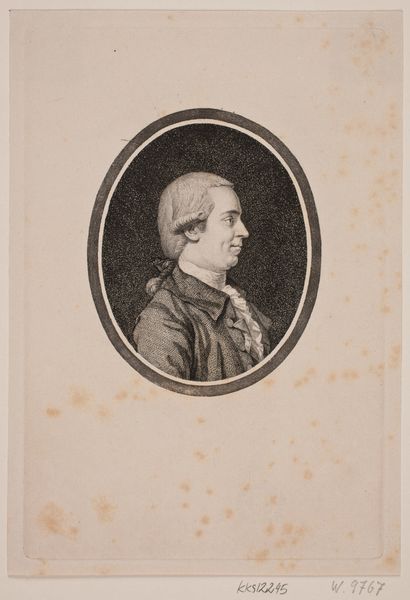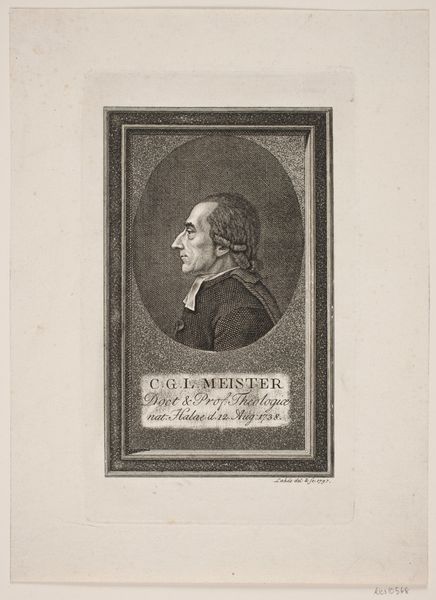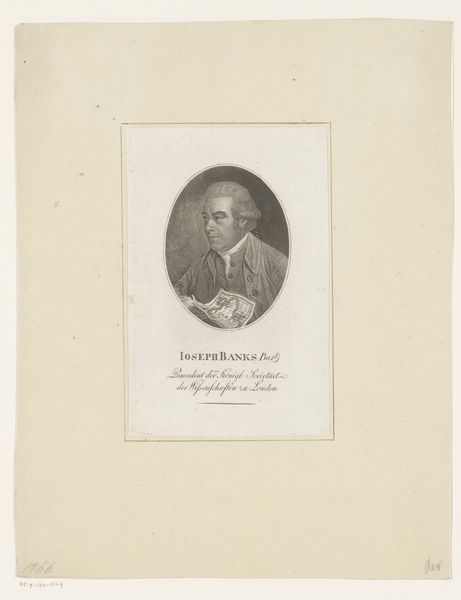
print, engraving
#
portrait
#
neoclacissism
# print
#
old engraving style
#
personal sketchbook
#
history-painting
#
academic-art
#
engraving
#
monochrome
Dimensions: height 128 mm, width 83 mm
Copyright: Rijks Museum: Open Domain
Heinrich Pfenninger made this print of Friedrich Gottlieb Klopstock, likely sometime between 1764 and 1815, using etching and engraving. It presents Klopstock in profile within an oval frame, a common trope for portraits in this era. Klopstock was a celebrated German poet, known for his odes and religious epics, particularly "Der Messias." The choice of printmaking as a medium is significant. In the late 18th century, prints were crucial for disseminating images and ideas across Europe. They served a public function, making art accessible beyond elite circles. Consider the institutional context: portraiture, especially of intellectuals and writers, gained popularity as a way to celebrate individual achievement, reflecting a broader cultural shift towards valuing individual genius. Analyzing Pfenninger’s print requires an understanding of the print market, the social status of artists and writers, and the cultural values attached to portraiture. To fully grasp the print’s significance, one might research the production and distribution of prints in 18th-century Europe, exploring how images like this contributed to constructing and circulating ideas about national identity and cultural authority.
Comments
No comments
Be the first to comment and join the conversation on the ultimate creative platform.

